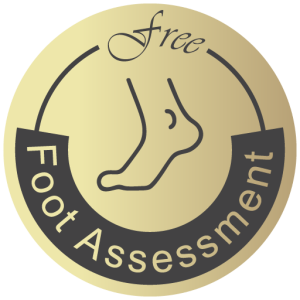



Foot pain is one of the most common problems that affect people of all ages and lifestyles. Whether it is due to long hours of standing, walking on hard surfaces, or wearing the wrong shoes, foot pain can interfere with daily activities and reduce quality of life. Understanding what causes foot pain and how to manage it naturally is essential for long-term comfort and mobility. Foot pain relief is not always about medication or surgery; many natural and practical methods can help restore foot health effectively.
One of the most effective and versatile solutions across many foot problems is using supportive insoles, which help improve alignment, reduce pressure, and enhance comfort.
In this article, we’ll explore the top five causes of foot pain and how you can treat them using natural remedies. From plantar fasciitis to bunions and heel pain, each condition has unique characteristics and solutions. By identifying the root cause, you can take the right steps toward effective foot pain relief.
Plantar fasciitis is one of the most frequent causes of heel and arch pain. It occurs when the thick band of tissue that runs across the bottom of the foot becomes inflamed or overstretched. People who spend long hours on their feet, athletes, or those who wear shoes with poor arch support are at higher risk of developing this condition.
If you want to understand more about different foot problems that can cause pain, you can explore more detailed information on various foot conditions.
Bunions are bony bumps that form at the base of the big toe joint. They often develop due to wearing tight or narrow shoes, but genetics and certain medical conditions such as arthritis can also contribute. As the bunion progresses, it may cause pain, swelling, and difficulty wearing shoes.
Bunions may not disappear completely without medical intervention, but these natural measures can help ease pain and prevent further progression.
While plantar fasciitis is a major contributor to heel pain, other causes include Achilles tendinitis, heel spurs, or overuse injuries. These conditions can result from repetitive stress, poor posture, or inadequate footwear.
If heel pain continues despite natural remedies, it’s a sign to review your foot posture or daily habits. A visit to a professional store specializing in foot support products may also be helpful for personalized guidance. Find options for professional assistance and custom support by visiting specialized stores.
Flat feet occur when the arches of the feet collapse or fail to develop properly. This condition can cause strain on muscles and ligaments in the feet and legs, leading to discomfort and fatigue, especially after prolonged activity.
Maintaining strong and flexible feet can prevent pain and improve balance. Early care for flat feet can help avoid further complications such as heel pain or knee discomfort.
Metatarsalgia refers to pain and inflammation in the ball of the foot. It often develops due to overuse, improper footwear, or high-impact activities such as running. People with foot deformities or those who wear high heels are particularly prone to this condition.
Persistent metatarsalgia may indicate an imbalance in foot mechanics or posture. Addressing the root cause early helps achieve better long-term foot pain relief.
Beyond specific conditions, general habits play a major role in keeping your feet healthy. Here are some natural practices for maintaining strong, pain-free feet:
If you’re unsure which condition may be causing your discomfort, you can start by taking a simple online assessment to evaluate your symptoms and understand potential causes.
While many cases of foot pain can be treated with natural methods, persistent or worsening pain requires professional evaluation. Conditions like severe bunions, chronic heel pain, or advanced plantar fasciitis may need customized support or therapy. A podiatrist or foot specialist can help identify the underlying cause and recommend suitable treatment options.
Ignoring ongoing foot pain can lead to further complications such as joint stress or posture imbalances. Early intervention ensures faster recovery and better long-term mobility.
Foot pain is more than a temporary inconvenience—it is often a signal that your feet need better care and attention. By understanding the underlying causes like plantar fasciitis, bunions, heel pain, flat feet, and metatarsalgia, you can take practical steps to restore comfort naturally. Regular stretching, proper footwear, rest, and massage can provide lasting foot pain relief and prevent future issues.
Incorporating custom or supportive insoles into your daily footwear routine can provide ongoing relief and prevent recurring pain across multiple foot conditions.
1. What is the fastest way to get foot pain relief naturally?
The quickest natural methods include rest, ice therapy, stretching exercises, and wearing supportive shoes. These steps reduce inflammation and promote healing.
2. Can plantar fasciitis heal without medical treatment?
Yes, most cases improve with home care, including rest, stretching, massage, and using shoes with strong arch support. However, severe cases may require professional guidance.
3. Are bunions reversible naturally?
Bunions cannot be reversed without surgery, but natural methods such as wearing roomy shoes, using toe spacers, and performing toe exercises can relieve pain and slow progression.
4. What causes foot pain in the morning?
Morning foot pain often results from plantar fasciitis or stiffness after rest. Gentle stretching before getting out of bed can help ease discomfort.
5. When should I see a doctor for foot pain?
If the pain persists for more than two weeks, affects your ability to walk, or is accompanied by swelling or numbness, consult a healthcare professional for evaluation.

